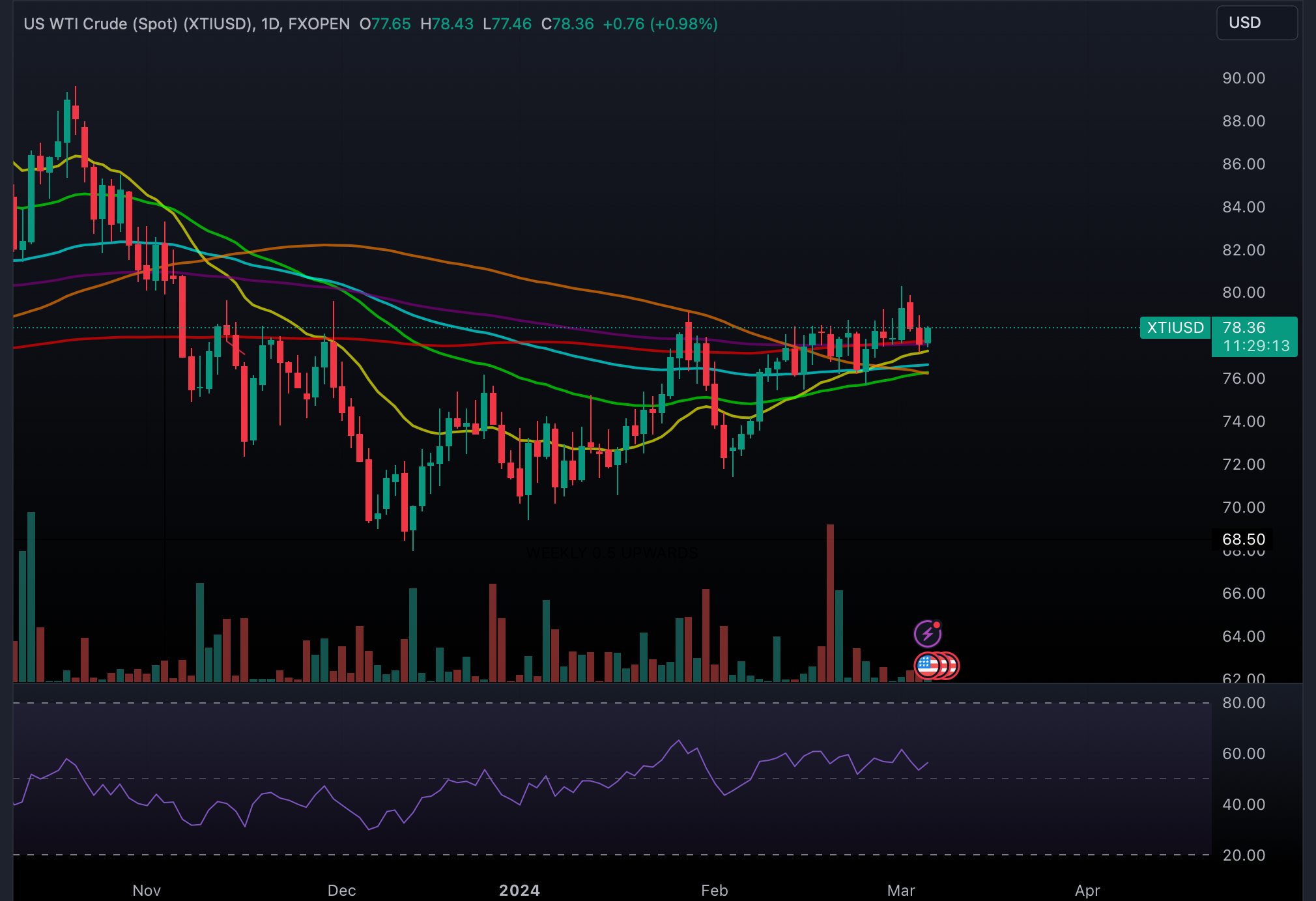West Texas Intermediate (WTI) oil prices are facing downward pressure for the third consecutive session, with rates hovering around $77.46 per barrel. The decline comes amidst growing concerns over potential demand slowdowns, particularly in light of recent economic indicators from the United States, which is the world’s leading oil consumer. A day earlier!
US WTI Crude (Spot) (XTIUSD) posted an intraday high of $78.43 and intraday low of $77.46. Oil is currently trading at $78.35 (3:29pm Wednesday, 6 March 2024 (GMT+5) Time in Pakistan).
US ECONOMIC INDICATORS SIGNAL SLOWDOWN
Recent data has highlighted areas of concern in the US economy. The ISM Services PMI, a key indicator of economic health, dipped to 52.6 in February, missing forecasts that predicted a slight decrease. Furthermore, January saw Factory Orders fall by 3.6%, a sharper drop than the anticipated 2.9%, underscoring the cooling economic activity.
FEDERAL RESERVE’S CAUTIOUS STANCE
Amid these economic signals, comments from former New York Fed economist Steven Friedman suggest that the Federal Reserve might adopt a more cautious stance on interest rate cuts, given the current economic growth and inflation volatility. This perspective hints at potentially fewer rate reductions in 2024 than initially expected, contributing to the cautious sentiment in the oil market.
GLOBAL INTEREST RATES AND CHINA’S GROWTH TARGET
The broader global economic outlook, influenced by major central banks’ tendency to maintain higher interest rates, further clouds the demand forecast for crude oil. In particular, the market is closely watching China, the world’s largest crude importer. Despite setting a growth target of around 5% for 2024, the absence of significant stimulus measures to rejuvenate the economy has left traders wary about future demand prospects.
OPEC+ OUTPUT CUTS AND MARKET RESPONSE
Efforts by OPEC+ countries, including Russia, to stabilize the market through voluntary oil output reductions have yet to assuage demand-related concerns fully. The coalition’s commitment to a 2.2 million barrels per day cut into the second quarter has been overshadowed by the uncertain demand landscape.
US CRUDE INVENTORY TRENDS
Adding to the complex market dynamics, the latest US API Weekly Crude Oil Stock data revealed an unexpected increase in oil inventories, contrasting with the anticipated reduction. Market participants now await the upcoming US EIA Crude Oil Stocks Change report, hoping for clearer insights into inventory levels and potential impacts on oil prices.




















